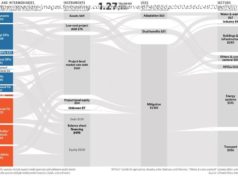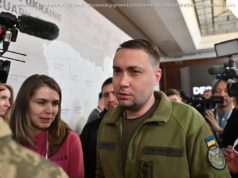Julian Zelizer explores four possible scenarios that could explain who Donald Trump truly is and what his relationship with Russia is all about.
And this news came sooner after Ian Bremmer, the head of Eurasia Group, a global political risk research and consulting group, revealed that the President reportedly had a previously undisclosed second meeting with Vladimir Putin at a G-20 dinner, at which they were so chummy other world leaders felt „flummoxed“ and „confused.“
The President then provided the New York Times with a rambling interview during which he strongly criticized Attorney General Jeff Sessions and Deputy Attorney General Rod Rosenstein, while indirectly threatening Robert Mueller not to look into his family finances.
As if all this was not enough, the Washington Post is now reporting that, according to US intelligence intercepts, then-Senator Jeff Sessions, while serving as foreign policy advisor to then candidate Trump, met twice with the Russian Ambassador Sergey Kislyak and discussed matters of high importance to Russia.
Meanwhile, Anthony Scaramucci, the new White House Communications Director, told CNN’s State of the Union on Sunday that Trump had still not accepted the intelligence community’s report of Russian meddling in the 2016 election.
Yet each new revelation brings back the question of who is Donald Trump and what’s going on with Russia.
The answer could have huge political consequences.
There are at least four possible scenarios.
A nothing burger?
One possibility is that, apart from the Trump Tower meeting organized by Don Jr., there was no problematic meeting with the Russians and that meddling in the campaign proceeded with no buy-in or cooperation from Trump’s team.
In the view of Trump’s Chief of Staff Reince Priebus, the Russia story is a „nothing-burger“ — the entire story is made up. This is a view that much of the Trump base shares.
In this view, a news media that is eager to bring the President down has manipulated the public, made up information through false „unnamed sources“ and called regular interactions untoward just to generate a scandal. This version of events leaves President Trump as the victim, a virtuous leader who has been under unfair assault from his enemies.
Some find this explanation hard to believe given the vast amount of information that has come out, including from James Comey and the Trumps themselves. But it is possible that the Trump Tower meeting was questionable judgement at worst, and that there were no further interactions.
Trump advisers at fault?
Another somewhat less benign way to see the story suggests that Trump was a figurehead who was manipulated by advisors, including members of his own family such as Jared Kushner and figures such as Paul Manafort, whose consulting firm was paid more than $17 million to work on behalf of a pro-Russia party in Ukraine, prior to his joining the campaign.
In this scenario, while Trump was figuring out new phrases to insult his opponents with and whipping up the frenetic crowds at his rallies, many of the people around him were working with highly questionable figures in Putin’s orbit. Trump was so focused on himself and the thrill of the attention he received that he did not understand the underside of his own campaign.
Naive about the dangers?
There is also a different way to look at the story, which is that many people in the Trump team were just not that perceptive about the world that they had entered. This version of the story would have us think that Donald Trump and Donald Trump Jr., as well as some others in the inner circle, didn’t really understand the dangers of what they were doing or the unsavory intentions of the persons that they surrounded themselves with. In this scenario, it was just another episode of „The Apprentice“ for them, and they didn’t get the problem with accepting invitations such as the one that Donald Jr. received through email .
Were the members of the Trump team so enamored with the figures who they met at the Miss Universe competition in 2013, or were they so excited about them as potential business partners to someday construct Trump Tower in Moscow, that they couldn’t understand the difference in the situation once Trump had entered the political arena?
Worst-case scenario
The worst-case scenario for the administration, and for the nation, is if Trump knowingly worked with the Russians. Did he build much of his presidential campaign around attacking „Crooked Hillary“ and her infamous email server while working in secret to seek assistance from the Russians in winning the presidency or possibly reaping economic benefits for his company? Is the story of the election that, rather than Democrats losing because they couldn’t woo enough working class voters, they lost key states by narrow margins because of meddling by the Russians?
In trying to intimidate Robert Mueller, as with Comey before him, is President Trump using Nixonian methods to try to cover up a scandal and shut down an investigation?
Even though he appears via Twitter to be the most transparent president in American history, giving us a live public diary of his thoughts, we don’t yet know who Donald Trump really is. That’s why we have a pretty serious investigation taking place and some very good journalists doing their jobs and trying to uncover the entire story. When we reach a conclusion, if the investigators are able to find everything that they need, we should have an answer to the question.
In the meantime, it would benefit the President and his team to stop hiding information and to stop saying things that are blatantly untrue. The Wall Street Journal editorial board has called for Trump to adopt a policy of “ radical transparency “ if he wants to avoid Democrats taking over Congress in 2018, resulting in impeachment being a „constant undercurrent if not an active threat.“ Rather than attacking the press, Trump should be straightforward about any interactions with the Russians.






